
Attic Ventilation
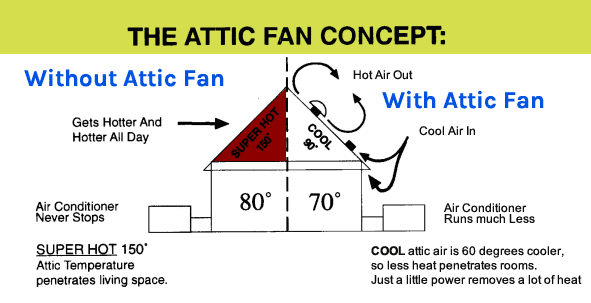
While sealing and insulating the attic makes a big difference in the comfort of you home in the winter, if your attic is not sufficiently ventilated it can cause issues. In the summer hot attics can create an oven effect on the top floor of the house if it is not sufficiently ventilated and in the winter you can wind up with ice damming. Moisture issues can occur any time of year. Because heat rises it’s important to have vents low in the roof such as soffit or eave vents to feed air into the attic and vents at the top to allow the warm air to escape.
Methods to ventilate the house
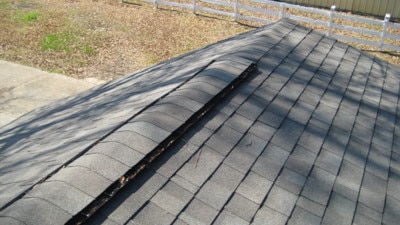
Ridge Vent
A ridge vent along ridge of the ridge of the roof is using convection to draw air from the lower soffit vents, which naturally flows upward to escape at the ridge of the roof. This method is quiet and free. In Maryland, most of the year this is sufficient to remove moisture and heat from the attic. In August, when its really hot, this method is not enough to keep the attic cool, and having an active form of attic ventilation such as an attic fan is desirable.
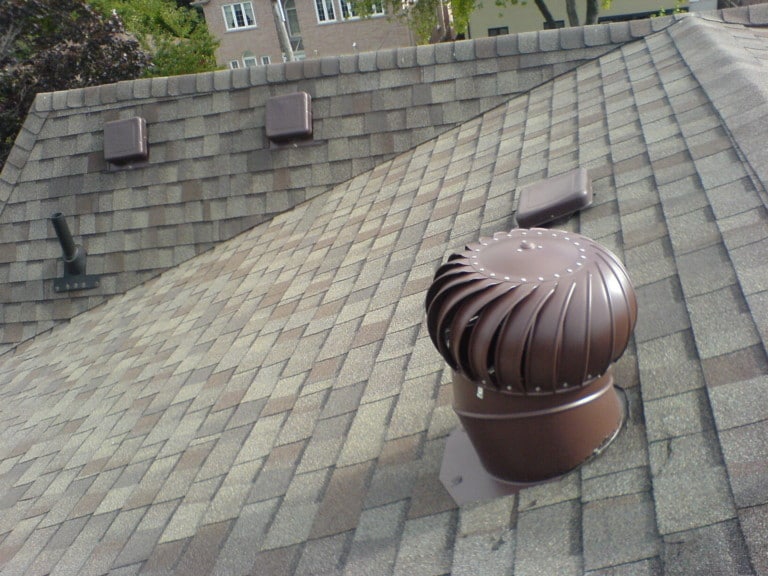
Wind Turbine
A wind turbine or “whirlybird” is also a passive method of venting the attic. These units move due to convection of air rising and leaving the attic and when the wind blows it draws air out of the attic. It’s important to get aluminum units with sealed all bearings so it doesn’t rust and get squeaky. This is a less expensive strategy than the ridge vent and an easy add-on if you find you need to add ventilation after roof work is complete. This is a great strategy for small attics.
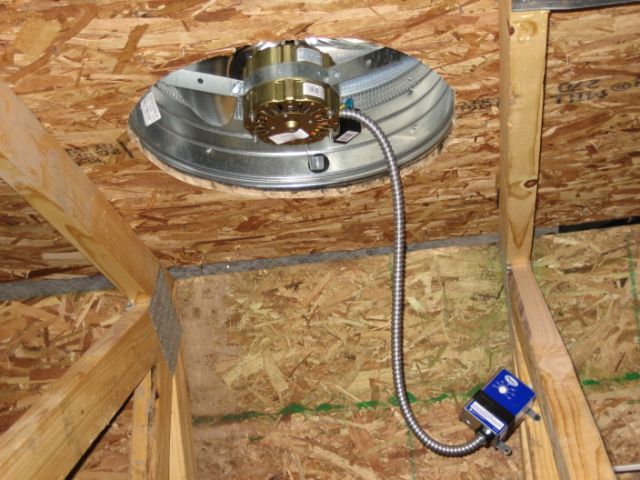
Attic Fans
Attic fans are active ventilation; they consume electricity and are controlled by a temperature/humidity switch. In Maryland, this is the best strategy; it works all year round removing moisture and heat. It needs to be sized correctly otherwise it is noisy and it needs sufficient intake air from soffit vents to “feed” it.
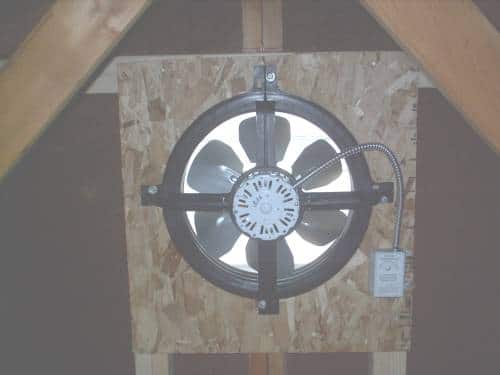
Gable End Fans
Gable end fans, great for smaller attic, not so great for larger spaces as it’s field of influence can be diminished over a small distance if there is a lot of soffit ventilation. Once again, this strategy needs eave of soffit vents to feed it as it can be noisy if it is being starved of air.
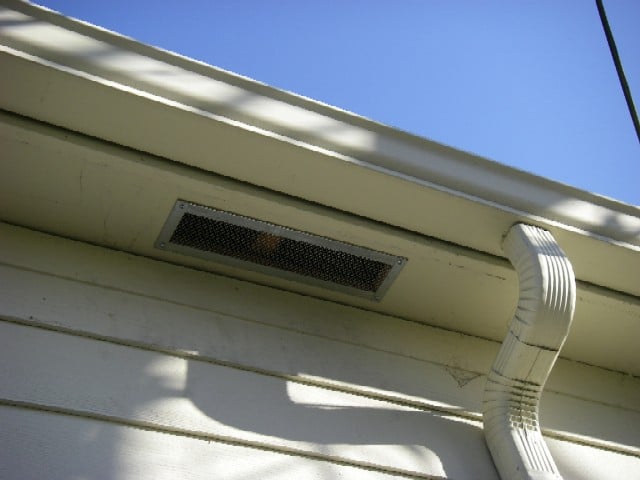
Soffit Vents
Soffit or eave vents feed air into the attic. All of the above ventilation strategies need air to be able to circulate the warm, and sometimes moist air out of the attic. On the inside of the attic, baffles need to be installed to stop insulation and other materials from blocking the airflow from these vents.
Ventilation calculation:
- Calculate the total vent area needed: Multiply the length of the attic times the width in feet to find the attic area, then divide by 150 to find the total square feet of vent space needed. [(length x width of attic in feet) ÷ 150 = total sq. ft. vent area]Example: a 50′ x 30′ attic would have a total area of 1,500 sq. ft., divided by 150 equals 10 sq. ft. of total vent space needed.
- Calculate the soffit vent area needed: Divide the total vent area by two to determine the soffit vent area. [Vent space ÷ 2 = sq. ft. soffit vent area] Example: 10 sq. ft. vent area ÷ 2 = 5 sq. ft. soffit vent area
MORE is not better:
Don’t install a ridge vent and an attic fan, either one or the other. Attic fans depressurize the attic space and can cause moisture to be drawn in when it’s raining, and it is short circuiting the soffit vents so neither the fan not the ridge vent will work as designed.

